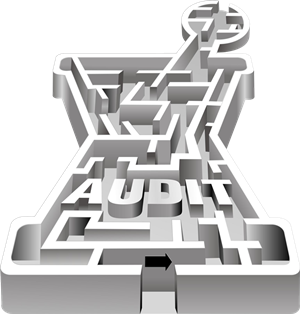
Types of Audits
Knowing the difference between the various types of audits will help the pharmacy to prepare for that audit in the most efficient and complete way possible.
Field/On-site Audits
Field/On-site Audits are performed onsite at the pharmacy and involve physical observations, prescription reviews, inventory, and checks for compliance with Part D regulations and procedures. Normally the pharmacy will be given notice before this type of audit but in some rare instances they can be unannounced, such as for Medicaid. Generally, the auditor will review claims from the previous 24 months of their specific claims and provide you with a range of prescriptions to have readily available beforehand.
Purchase Verification
Purchase Verification Audits review the amounts and NDCs of medications that are submitted by pharmacies from wholesale receipts. These can be classified as investigational type audits and are in accordance with Third Party Payor agreements.
Investigational Audit
Providers are contacted normally by telephone or mail and asked to provide photocopies of specific documents and records related to claims paid to the provider during a specified period of time. Documentation may include copies of original prescriptions, signature logs, computer records, and invoices showing purchase or receipt of dispensed medications. These can be as simple as comparing NDCs ordered versus those dispensed to a complex investigation about prescriber, member or potentially pharmacy fraud.
Desk/Mail Audits
Desk/Mail Audits use automated means to review pharmacy claims and encounter data received by the plan or PBM. This type of audit requires the pharmacy to locate prescription records and send them to the PBM. It is set up to evaluate prescribing patterns, physician referral patterns, utilization overrides, ingredient cost integrity, geographic prescribing reports, payment reports, and billed issues to identify possible abusive or fraudulent activity.
Prescriber/Member Audits
Prescriber Audits have specific claim information submitted by the pharmacy and is then thoroughly verified by a prescriber/physician to ensure that each parties records coincide. It is essentially handled the same as a Desk/Mail Audit.
Member Audits are similar to the Prescriber Audit with the exception that the corresponding claims are verified with the patient/customers verification. It is essentially handled the same as a Desk/Mail Audit.
Telephone Audits
Telephone Audits The pharmacy is contacted by the PBM usually to correct claim billing on a single or small number of claims. It is not used for large volumes of claims. Failure to comply with a telephone audit will normally result in the PBM reversing the claim and could lead to a desk or on-site audit.
Common Audit Triggers
All audit companies have comprehensive lists of audit triggers that they monitor on a regular basis. The most common audit triggers are listed below:
- Generic, Multi-Source Brand, and Single Source Brand fill rates
- Generic substitution rate
- DAW code usage
- Average claim amount
- Quantity dispensed versus days supply
- FDA guidelines
- Quantity dispensed versus prescription drug program limitations
- Usual and Customary claims
- Excessive claim reversals
- Compounding (high claim amounts billed or average ingredient cost too high)
- Excessive amounts of Controlled Substances being dispensed
- Formulary Compliance
- Prescriber Profiling
- Patient profiling
- Invalid DEA, NPI, or state board license number in the incorrect NCPDP field
- Fraud hotlines and prescription drug program member referrals
- Submitting smaller package sizes for large quantities of medications
- "Use As Directed" prescriptions
There are also non-statistical triggers that audit programs use. They receive referrals from plan members, plan sponsors, “Fraud, Waste and Abuse” programs, and through random selections.
What to Expect in a Compliance Audit
Receiving notice that your pharmacy will be visited by an auditor can lead to many questions. What will the auditor look for? What can I do to prepare? On-site audits generally involve physical observations, prescription reviews, inventory, and checks for compliance with Part D regulations and procedures. Below are listed the types of elements an auditor may review during an on-site audit:
- Licensure of staff
- PIC (FTE/Contracted)
- CMS 10147 adherence
- HIPAA Security
- Training - FWA, Compliance
- OIG/GSA Validation
- AHCA Compliance (FL only)
- Pharmacy Insurance Coverage
- States of Licensure
- Wholesalers
- Records Retention
- Mail Volume
- Compound Volume
- Hours of Operation
- Security Concerns - pharmacy
- Inventory Evaluation
- DEA licensure
- Patient Consulting practices
- Misfill procedures
- Medication Recall Procedures
- Medication expiration procedures
- Return-to-stock procedures
- Generic/Brand Price disclosures
- Patient demographics and allergy capture
- Prescription Review (limited)
- Signature Log Review (limited)
Additionally, you can expect to spend some one-on-one time with the auditor before the audit is completed.